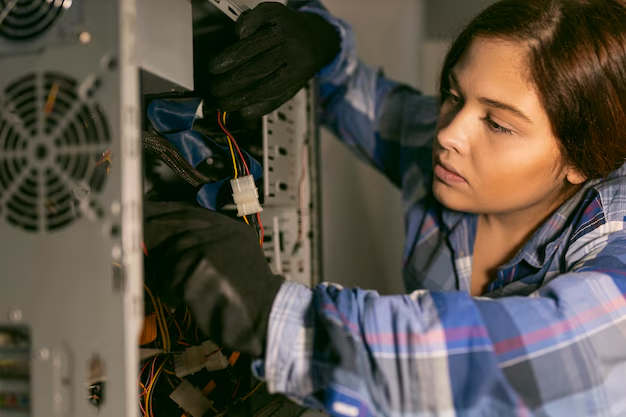Discovering the Secrets: How to Test a Refrigerator Compressor Relay the Smart Way
Refrigerators are essential appliances that most households rely on daily. One of the critical components ensuring its functionality is the compressor relay. If your fridge isn't cooling effectively or shows inconsistencies, the compressor relay might be a potential culprit. In this guide, we’ll explore how to test a refrigerator compressor relay, providing detailed insights and actionable steps to help you diagnose issues with ease.
🎯 Understanding the Basics
What is a Refrigerator Compressor Relay?
A compressor relay is a small device that starts the compressor in a refrigerator. It acts as a switch to power up the compressor by coupling to it and sending the electrical current required. Without a functioning relay, your refrigerator might struggle to start, run intermittently, or not at all, leading to potential spoilage of food.
Why is Testing Important?
Testing the compressor relay can save you from unnecessary repairs or replacements. A faulty relay can present symptoms similar to more severe technical issues, such as a broken compressor. By identifying the genuine problem, you can address it without wasting resources.
🛠️ Tools Needed for Testing
Before diving into the testing process, gather these essential tools for an efficient process:
- Multimeter: To measure electrical current and check relay functionality.
- Screwdriver: For unscrewing panels or protective covers.
- Notepad and Pen: To jot down observations and details about your refrigerator's model.
🔍 Step-by-Step Guide to Test a Refrigerator Compressor Relay
1. Safety First
Before you begin, ensure safety by disconnecting your refrigerator from the power source. This prevents electrical shocks and ensures a safe working environment.
2. Locate the Compressor Relay
Typically, the compressor relay is found at the back of the refrigerator, attached to the compressor’s side. Here's how to reach it:
- Remove the back panel of the fridge using a screwdriver.
- Identify the compressor, which usually resembles a black, cylindrical tank.
- Look for the relay at the side of the compressor. It’s often a small, square or rectangular device.
3. Remove the Relay
Gently detach the relay from its position by:
- Ensuring you have a clear view and access.
- Gripping it carefully to avoid wires detaching accidentally.
- Pulling it straight out without twisting, which could damage the connections.
4. Test the Relay with a Multimeter
Now that you have access to the relay, it’s time to test it.
- Switch your multimeter to its Ohms or Resistance setting.
- With the relay in hand, place the multimeter probes onto the relay terminals.
- Check for continuity: A functioning relay will show little to no resistance (close to zero Ohms). If the needle does not move or a digital multimeter shows infinite resistance, the relay might be faulty.
5. Observe for Physical Damage
Physical examination can also provide clues. Check for signs of wear and tear, burn marks, or melting. These are strong indicators that a replacement might be necessary, regardless of electrical testing results.
🛡️ Preventive Measures and Maintenance Tips
Regular Maintenance
- Clean the coils located at the back of your refrigerator to enhance efficiency, potentially extending the life of components such as the relay.
- Regularly check the power cord and outlets for signs of wear or electrical faults.
When to Call a Professional
If your testing suggests a relay issue but doesn't resolve operational problems, consider consulting a professional. Complex electrical components and connections often require professional intervention to ensure repairs adhere to safety and operational standards.
🎁 Quick Reference Guide
Here’s a handy summary to keep at hand when testing your refrigerator's compressor relay:
| Task | Steps |
|---|---|
| Disconnect Power | Unplug the fridge to ensure a safe testing environment. |
| Locate Relay | Check the back of the fridge, attached to the compressor. |
| Remove Relay | Pull gently to avoid damaging connections. |
| Test with Multimeter | Measure resistance; expect low resistance for functionality. |
| Inspect Physically | Look for burn marks or signs of damage. |
| Consult Professional | If unresolved, seek expert assessment for underlying issues. |
👩🔧 Additional Insights and FAQs
How Long Do Compressor Relays Last?
Generally, a compressor relay can last several years with proper usage. However, factors such as electrical surges, wear from repeated use, and poor maintenance can shorten its lifespan.
What Causes a Relay to Fail?
Relay failure can occur due to voltage spikes, frequent on/off cycling, and general wear from regular function. Ensuring stable electrical supply and minimizing compressor strain can help alleviate some of these issues.
Possible Symptoms of a Faulty Relay
- Clicking Noises: Repeated clicking sounds near the compressor can imply relay issues.
- No Cooling: If the fridge isn’t cooling but the interior light works, the relay might not be engaging the compressor.
- Short Cycling: Frequent shutdown and startup cycles can signify relay or electrical issues.
🌿 Empowering Efficient Refrigerator Use
Understanding how to test a refrigerator compressor relay empowers you to make informed decisions regarding appliance maintenance. Regular check-ups and addressing minor issues swiftly not only enhance the longevity of your refrigerator but also contribute to better energy efficiency and cost savings over time.
Evaluating the compressor relay might initially seem daunting, but with the right tools and insights, you can tackle this task like a seasoned pro. While DIY efforts can resolve minor issues, remember that some situations call for professional assistance to ensure safe and reliable repair processes.
